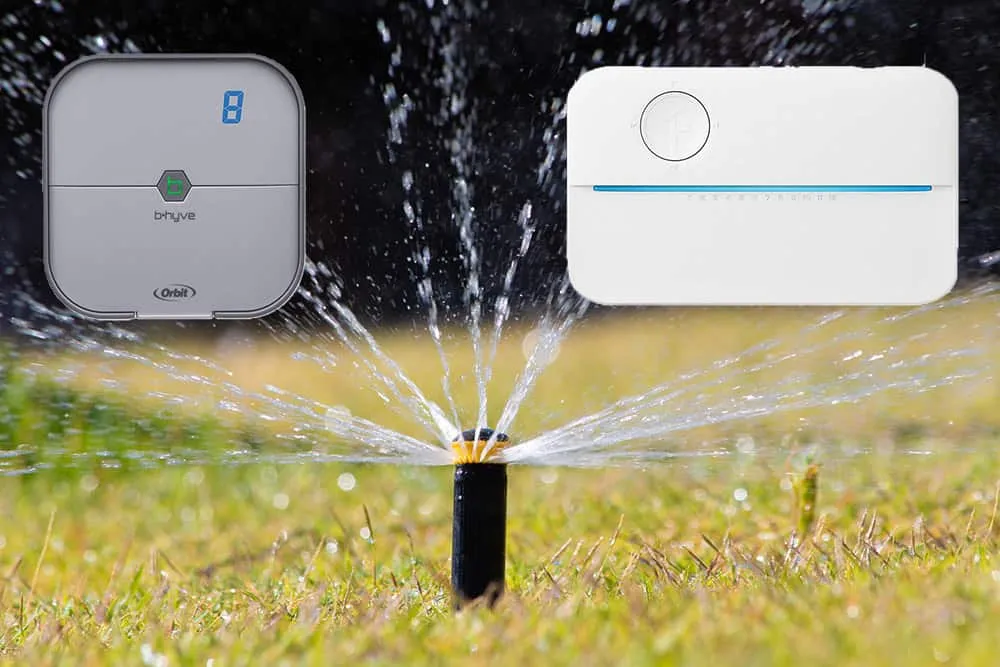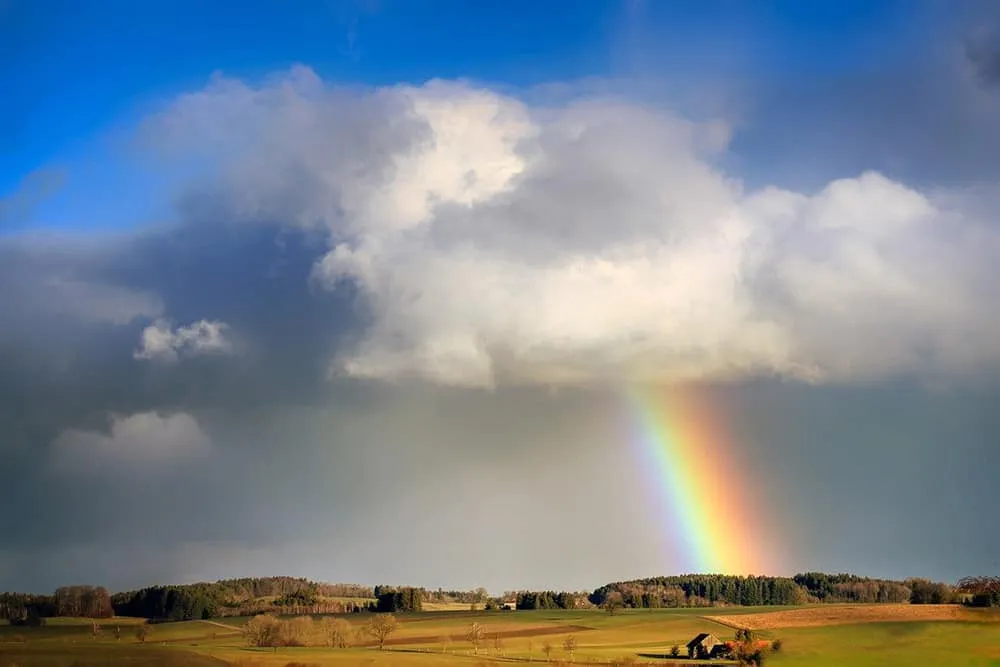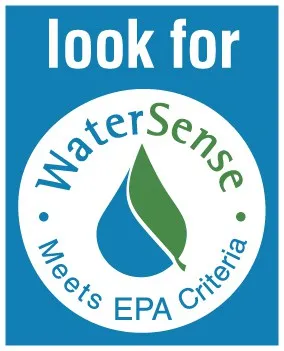
Smart devices are becoming a part of everyday life, and now they have trickled into irrigation systems. (Pardon the pun!) It’s estimated that more than 50% of the water used to irrigate our landscapes is wasted dur to runoff, excessive watering, and other inefficiencies. Smart sprinkler systems are part of the answer to fixing that problem.
What is a Smart Sprinkler System? Smart Sprinkler Systems, also known as Smart Sprinkler Controllers, are Internet connected devices that monitor weather, soil moisture, and other conditions to calculate and automatically adjust the watering schedule. These Smart Sprinkler Systems are often controlled through an app.
Smart Sprinkler Controllers are a great addition to any smart home. For the environmentally conscious, they will help you conserve water. For the budget conscious, they will help you save money. And these are just a few of the great features. All the features are discussed in further detail below.
Smart Sprinkler Controller Features
App Control
The App can fully control all the features of the smart sprinkler controller. In fact, on some models there is only 1 physical button on the controller. Orbit’s B-Hyve is an example of this, where there is only one button on the controller. This button is used to enter pairing mode, or to manually start a program if you don’t have your phone. Rachio is another example of this, where there is a 4-button controller and the front is primarily a status light.
The App is used to setup the zones, and the properties for each zone. For some of the apps, you can take pictures of where each zone covers, name the zone, set the type of sprinklers (ex: Drip vs Spray), set the slope, how much sunlight the zone gets, and a few other questions. Once the zones are setup, programs for those zones will be automatically generated. These programs can of course be adjusted in the app to fit your needs and abide by watering regulations.
The app also allows you to fine tune each zone based on the watering needs in that area to ensure plants receive the proper amount of water when they need it, without wasting any of that water. The app monitors and will try optimize your water schedule, but it can be manually adjusted.
Voice Assistant and Home Automation Integration
These Smart Sprinkler Controllers are capable of integrating with other smart devices in your home. It depends on the brand on which integrations are available, but most of the include integrations with the most popular voice assistants: Google Assistant, Amazon Alexa, and Apple HomeKit.
This means you can control your sprinklers by using only your voice. For example, you could say, “Alexa, ask Rachio to run Zone 2 for 10 minutes.” Rachio states that they have over 100 different commands available, ranging from turning Rachio on or off or into stand-by mode, running individual zone or programs, or skipping based on rain events. IF you want, this can make watering your lawn a truly hand-free process. Now if only mowing the lawn was hand-free…. Those robotic lawn mowers still cost a pretty penny.
Aside from using voice assistants, you can also use home automation software like IFTTT, SmartThings, or Home Assistant to name a few. These various platforms allow you to integrate your sprinkler controller with other smart devices. Here are a couple examples
- Stop your sprinklers when you pull in or out of the driveway if they are turned on
- This could use your physical location, or your garage door status
- Stop sprinklers when an exterior door is opened.
- Run your flower bed drip system if the temperature outside exceeds a certain range.
- Turn on your sprinklers if a fire is detected as a means of fire prevention
These of course are just a few examples. The other benefit of integration with these home automation platforms is for tracking statistics. These smart controllers are able to provide all the data they collect and take into your own software for processing. Another option is to create your own sprinkler control dashboard.
A few of the brands even offer API calls. That’s something people familiar with software will understand. If you don’t know what it means, I’d suggest not worrying about. If you are curious though, go take a look at the API calls available and use Google to start learning how to become a software developer!
Weather Prediction and Automatic Adjustments

Uses Location Based Forecasts
Smart Sprinkler Controllers use your location to automatically find select the closest weather station. If you haven’t looked before, you might be surprised how many weather stations there are. There is probably at least one nearby, and possibly even multiple locations in your neighborhood.
If the weather station that is automatically selected isn’t the best option for you, perhaps due to a different micro-climate, it is possible to choose one manually, or even connect your own weather station as a sensor.
Wind, Rain, Freeze and More Protections
These protection features act based on weather conditions. They will either skip the watering schedule or adjust the duration of that schedule.
Rain Skip
This protection looks at the forecast for the past day and into the future for the next. This feature will skip the watering schedule if it is raining. From the time the schedule is set to start, when the precipitation amount is expected to exceed a programmed amount (looking forward and back 24 hours), the schedule will be skipped. This precipitation threshold is adjustable within the app.
Wind Skip
If high winds area problem in your area, then this feature will be useful. If it is too windy outside, skip watering. Prevent water being wasted and blown off into the air. Skip watering when high winds are likely to scatter water intended for your lawn. Watering is skipped if wind speeds exceed your predetermined threshold. Wind speed can be measured using a local sensor or the weather station information.
Freeze Skip
This feature will skip the watering schedule based on the observed temperature; if the temperature threshold at or below at the time the schedule starts, the schedule will be skipped. You can change this threshold under Weather Intelligence in the “More” tab.
Saturation Skip
Have you ever had your lawn turn into a big puddle? Prevent your lawn from becoming oversaturated. This feature will skip the watering schedule anytime the soil moisture level is high enough that it will be fine until the next watering day.
Seasonal Adjustment
This feature will update your schedule durations on a monthly basis to offset seasonal weather changes. In short, durations increase from winter to summer and decrease from summer to winter.
Add-On Sensor Compatibility
Smart Sprinkler Controllers are capable of using data from add-on sensors.
These sensors include
- Rain sensors
- Moisture/Soil sensors
- Flow sensors
Rain Sensors
Rain sensors measure the amount of rainfall, and communicate that information to the controller. When rainfall reaches a certain level, it can trigger the controller to skip watering or stop its current schedule.
Rain sensors, by design, are reactive to rain events. Smart Sprinkler Controllers also take a proactive approach by checking the local weather forecasts. The controller will take the rainfall predictions and compare them against the same rainfall threshold. The problem with this method is that it doesn’t always rain as much as expected. Your lawn may not get watered, or it may get overwatered.
Soil Moisture Sensors
Soil Sensors reduce water waste by continuously measuring moisture levels in the soil and determining when to allow your controller to water.
Many lawns have multiple micro-climates that they need to account for; from south-facing and full sun to north-facing with a slope. If you will only be using one sensor for several zones, the moisture sensor should be placed in the zone that is normally the driest, or most in need of irrigation. This will ensure that all zones receive the minimum amount of irrigation.
If possible, it’s best to use a network of sensors to help control watering for each zone. The smart sprinkler controller can adjust watering times for each specific zone based on moisture level.
Flow Sensors
Flow sensors monitor the flow of water running through the pipe that is installed on. This allows the controller to record and report your sprinkler’s actual water consumption in gallons. Given this information, flow monitoring helps to conserve water, protect plants, and prevents any damage that may be caused by irrigation system failures.
Savings
There are two ways that smart sprinkler controllers can help you save money. One way is by saving you money right away, in the form of a utility rebate. The second way is by saving you money over time through water conservation.
Water Savings
Most smart sprinkler controllers are labeled as EPA WaterSense. WaterSense is a program created by the EPA to “protect the future of our nation’s water supply by offering people a simple way to use less water with water-efficient products.”
Products bearing the WaterSense label:
* Perform as well or better than their less efficient counterparts.
* Are 20 percent more water efficient than average products in that category.
* Realize water savings on a national level.
* Provide measurable water savings results.
* Achieve water efficiency through several technology options.
https://www.epa.gov/watersense/watersense-label
You can check which products are WaterSense certified on the EPA’s website here. The EPA WaterSense logo looks like this.

Utility Rebate
Smart sprinkler controllers may qualify for rebates up to the cost of the controller depending on your water district and/or utility company. Many of the companies that manufacturer these controllers have websites to help you search for the rebates available. Here is one from Rachio.
The Wrap Up
Smart Sprinkler System is a term often used to describe an irrigation system that is run by a Smart Sprinkler Controller. Ultimately smart sprinkler systems are going to save you money as well as save you time. Over time, they will also provide valuable data that can be used to save money and water, all while making your lawn be healthy and look the best it can.
